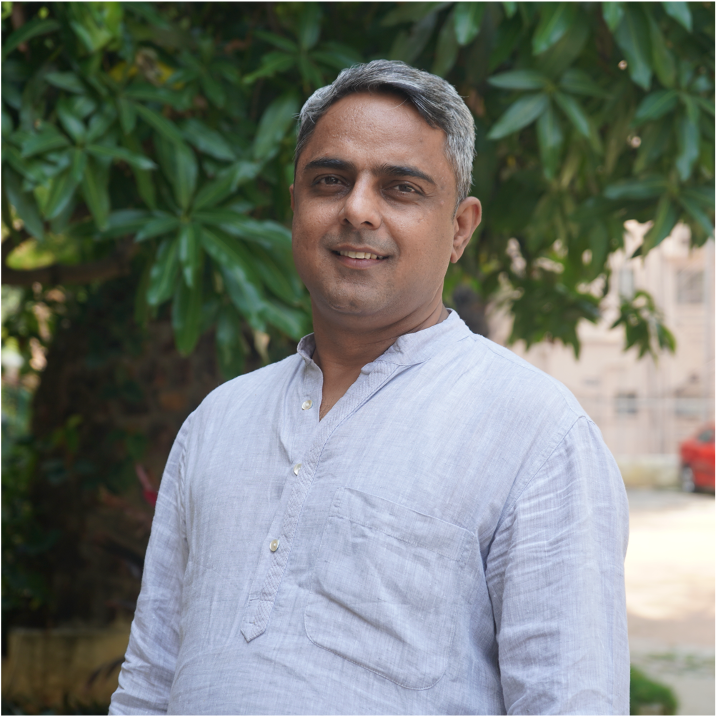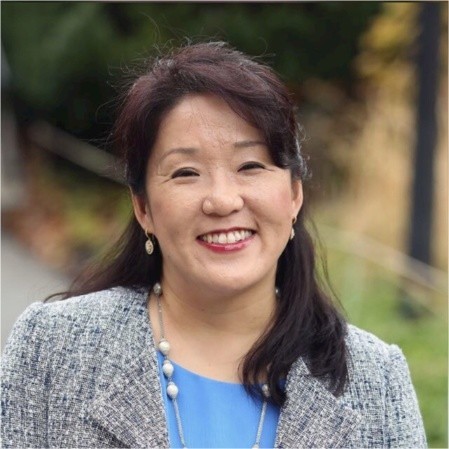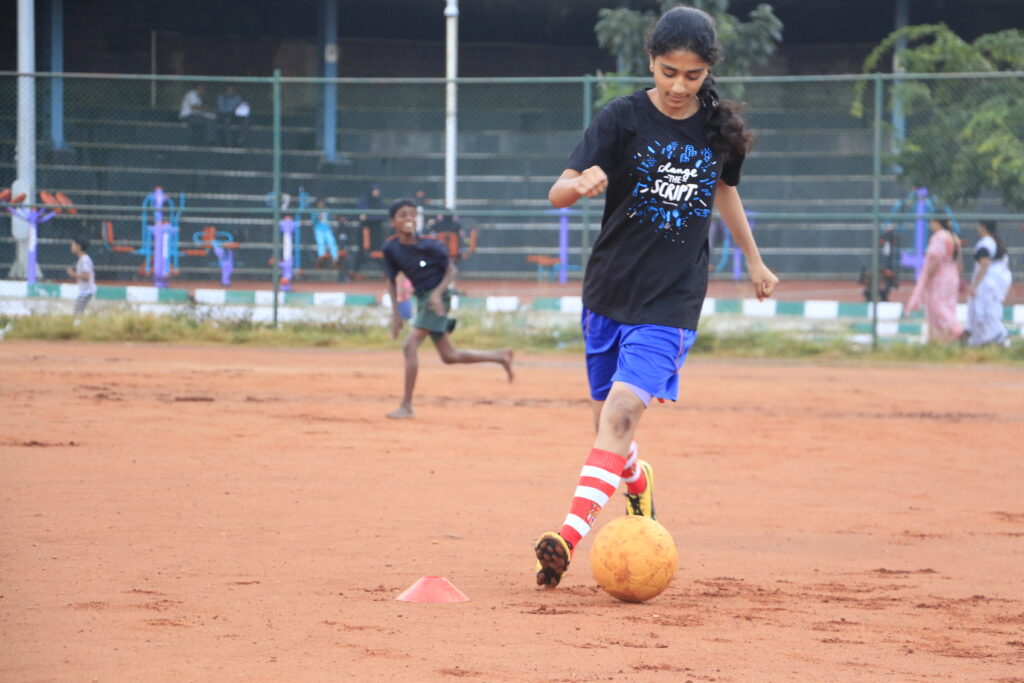Why and How We Must Show up in the World If We Want Every Child to Have a Thriving Life
Vishal Talreja co-founded Dream a Dream – a charitable trust empowering young people from vulnerable backgrounds to overcome adversity and thrive in the 21st century using a creative life skills approach. Vishal is an Ashoka Fellow, an Eisenhower Fellow, a Salzburg Global Fellow, and a Board Member at Goonj.
Connie K Chung works at the intersection of practice, policy, & research, focusing on learning to live well. Currently a consultant to Catalyst 2030, she has served previously as a Foster America Fellow, a consultant to the OECD, and as the Associate Director of the Harvard Global Education Innovation Initiative.


Vishal and Connie have recently published the book When We Thrive, Our World Thrives about the graduates of Dream a Dream – with moving, personal stories of young people such as Afreen, Rajeshwari, Prasanna, and many more – and what it means to grow up with adversity and thrive. Since 1999, Dream a Dream has gained the attention of Indian and global communities as a leading education non-profit that is cracking the code on how to support young people with backgrounds of adversity to thrive, realise their potential, and become leaders who will shape our collective future. Currently, Dream a Dream works directly with 10,000 young people each year through two innovation labs – After School Life Skills Programme and Career Connect Programme and its programs impact over 3 million children through partnerships with 6 State Governments across India.
This interview is part of the insight series from Big Change, a UK-based charity acting as a catalyst for change and working in partnership to understand, advocate for and unlock support for education transformation locally, nationally, and globally. Recent global research A New Education Story identified three drivers for transforming education systems – purpose (goals and outcomes), power (voice and agency), and practice (unlocking innovation).
The stories young people shared in When We Thrive, Our World Thrives illuminate how implementing the three drivers can look in practice. This interview is a sneak peek into the book and how we must show up in the world if we want every child to thrive.
Vishal, you write how the book is not about Dream a Dream and making the organisation look good, but about young people’s stories that need to be told because they speak truth to power. You write they mirror the structural barriers and systemic inequities we perpetuate on young people, and it is a call to action to relook at some of our limiting belief systems. What are our limiting belief systems?
Vishal: During 23 years of our work in Dream a Dream, we have met young people from very diverse backgrounds. What we’ve seen is that all young people have dreams and aspirations. They want to feel respected and cared for and live a life of dignity. However, our society creates complex systemic barriers that prevent young people growing with adversity from thriving.
Firstly, parents, teachers, education leaders, and other stakeholders lack an understanding of the impact that adverse experiences have on children. When children experience adversities such as neglect, violence, and lack of nutrition or care, it impacts their ability to achieve developmental milestones due to the tremendous trauma they might be carrying. If we design learning systems without taking this adversity into account, we create a systemic barrier. We need to address this trauma and create safe spaces where young people can heal and engage with learning as they enter a school system.
Another limiting belief is that if kids are poor, it’s okay to give them poor choices. In the last two decades, most education solutions for the poor in India were focused on ensuring children have numeracy and literacy. But we can’t reduce education and learning outcomes to that level. We need to provide a holistic education environment, so every child can build social-emotional learning capacities, a sense of identity, acquire life skills, and live up to their potential.
Finally, a lack of equity creates a barrier. Given India’s caste system history, many upper-caste people brought their biases into the education system, believing that lower-caste people didn’t deserve education. Nowadays, nearly 99% of children enter the school system at the primary age, and a first generation of pupils sit in the same room with the upper-caste kids. But if the teacher believes the lower-caste kids don’t deserve it, they are treated differently and sit on the floor instead of the bench. In some schools, teachers still tell lower caste kids they are good for nothing and that their families are meant to do low-level jobs. This undignifies their identity and their histories.
Connie, you work at the intersection of practice, policy, & research, focusing on learning to live well – how do Dream a Dream’s practices reflect findings from research literature about positive youth development?
Connie: In addition to looking at research literature and best practices, as educators, it’s important to ask young people what matters to them and what makes a difference. When I interviewed young people to write their stories, two of the questions were: “What do you think was the reason for your success? What do you remember from Dream a Dream’s practices?” Their responses lined up with the research.
Young people remembered having a caring and safe environment where they felt free to take risks and make friends across different castes, genders, and religions. They cited Dream a Dream’s facilitators who created such an environment, shared power, and showed care by simply asking them what interests them. Many of the participants also referred to being offered snacks as a sign of care. In the book, I share my own story of teaching, where students even in more materially privileged contexts remembered the breakfast snacks I had brought. This tells me that it’s more than about having food; it is about youth seeing food provision as a sign of care.
It’s also important to give young people challenges so they can do well instead of coddling them. These challenges shouldn’t be too overwhelming or too small, so they feel meaningless; they should be in that zone of proximal development. And this is what young people remember – being challenged while being supported, whether it was financially, physically, or emotionally. All these things are critical to helping young people develop positively.
In the book, you also write about the care, support, encouragement to grow, power sharing, and expanded possibilities that they appreciated about Dream a Dream – young people such as Afreen, Rajeshwari, Prasanna. Could you expand a bit on the concept of power-sharing?
Vishal: When we started Dream a Dream as a group of young people, most of us came from an upper-class background. We wanted to use our time to do good in the world and bring joy into kids’ lives from adversity. After a few years, we realised this approach was flawed. It came from our need to feel useful and validated, not from a true desire to solve the problem. It was young people who challenged us and pushed these boundaries.
We used to work with a care home for HIV-positive children, and we told them we would visit them every weekend but after a few months, we stopped because we didn’t have the capacity. Then we realised we have to be transparent and communicate if we want to build a relationship of trust. These kids have grown up in environments with broken promises, and we can’t be the ones creating trauma and a sense of betrayal.
We also ran a field hockey program for kids from different care homes. They used to get up at 4:00 am, walk for an hour to the bus stop, and change two buses to get to the hockey field by 6:30 am. They would practise for two hours, do the same route back and go to school for the whole day of studying. These kids had courage to speak up to tell us it’s not easy for them to participate although they liked the program. They didn’t have a chance to eat and were tired by the end of the day. They wanted a vehicle to bring them to the bus stop and get snacks after practice so they could go to school energised. These simple things helped us learn the context and use our power to make the shift.
Another example of power-sharing is a rugby program we used to run. We were about to close it down because of the lack of funding and coaches when a group of kids from the program made a video about the impact it had had on them. They came to our office and insisted we have a conversation about it. As we watched the video, we were shocked by how easily we took the decision based on organisational priorities and not on the impact for the kids. We continued the program for some more years. By then, these young people had become empowered adults and started their own community rugby club with their money and no support from Dream a Dream. The club has been running for +10 years and has raised players that compete at the state and national levels. This experience taught us that young people always know best, and we have to create spaces for them to find their voice, step back, and respond as equals. And if we do make different choices, we must communicate it and be transparent.
Power is a critical aspect of our work. Today, 50% of Dream a Dream’s staff are alumni of our program. For example, Dream a Dream’s director of programs is an alumnus and she has the best context and understanding of young people’s realities. Today a big topic inside the organisation is what are the identities of power that each one of us has. In specific contexts, a young person from adversity carries power that I as a leader of the organisation might not have. We need to understand this intersectionality and create a microcosm of a society where power is consistently explored and redistributed. Then we’d be able to create the same thriving ecosystems in society outside of Dream a Dream.
Connie: Power-sharing begins with modelling. There is always an established power dynamic between people due to their age, gender, ethnicity, professional background, and so on. So how do teachers and educators exercise our power when students don’t do what we asked them to do? How do we share power in the day-to-day decision-making about what and how we teach and what we do with the outcomes? It’s essential to reflect on our own power and how we use it or choose not to use it. Power itself isn’t bad; it’s about how we exercise it. In our world, there are a lot of examples of hierarchical power, whether it’s in the workplace, government, or day-to-day interactions. We have to model power-sharing differently than how the world currently exercises it.
The second aspect of power sharing is the mindset around it. It’s important to acknowledge that sharing power with young people is not condescending charity work. It’s about recognizing they also have power – powerful insights, experiences, and contributions to make. Even if I have positional power, it matters that I have the humble attitude that would allow young people to share genuinely and authentically. There are different ways to share power; for example, collaborating with young people or giving them an assignment with the possibility to choose their own topic. The amount of structure and support a teacher provides can vary based on the time of the year, the age of the student, their life experiences, and their skills and competence. It’s important to be thoughtful about the learning context because if we set up young people to fail too much, their confidence will go down. We as educators have to find that sweet spot of offering enough challenges that are meaningful but not overwhelming for students.

Connie, throughout the book, you interweave research findings with observations and stories from Dream a Dream. Would you share a bit on the relationship between evidence and what you witnessed at Dream a Dream regarding trauma-informed care, learning self-regulation, and experiential learning?
Connie: Trauma is complex, and how people heal from it is a journey. One of the actions I found the most helpful when parenting my foster child was maintaining structure. Instability and unpredictability causes and exacerbates trauma which translates into more anxiety and dysregulation. Having a steady routine helps young people to go through emotional ups and downs. Having the same daily routine, built around the needs of the child, helps them know what to expect and calms them down. The same applies to schools. We must provide young people with structured, predictable, inclusive, and inviting environments that facilitate healing and encourage them to speak up and make choices.
The research on trauma is just starting to take off. We found that our DNA can change with trauma, so the trauma our ancestors suffered may get passed down to us. If we consider how many countries were at war or how many generations of our ancestors were fighting for survival, trauma may be encoded in our DNA. I recommend a book called My Grandmother’s Hands, about intergenerational trauma carried in our bodies that has implications for the broader world. The book gives a rather longitudinal view of trauma in a way I found interesting.
The stories shared in your book show and reinforced the idea that young people’s adverse backgrounds do not define them and their futures and that they, in fact, can thrive. If you both were asked to design education practices in education systems – what would they entail to ensure all children can thrive?
Connie: There’s a concept called universal design for learning, often associated with designing for equity and special education. The main principle is, if we design our education system to work for the most marginalised young people, everyone will benefit. The statistics around adverse childhood experiences (ACE), which is a measure of the trauma we’ve been through, show that 6 out of 10 people have experienced at least one type of ACE before the age of 18. Even in the last three years, the pandemic was a traumatising experience for many of us. So if we start with the basic understanding that most of us have trauma or adversity to overcome when designing education systems, I think our learning environments would be vastly different.
During the pandemic, the United States released more money to the poorest families because a lot of people were out of work. The preliminary studies show that extra monetary assistance given to the families improved many measures, including the number of children living in poverty who often end up in foster care. Currently, more studies are needed about how this type of support is connected with better outcomes for people and their mental, economic, and physical health and what would happen if education systems partnered with other parts of the ecosystem to provide holistic support to young people as they enter the school system. Although the results are preliminary, they show these policies help. The ideas themselves are not new. It’s the implementation and prioritisation of these ideas where we often fall short.
Vishal, you and Dream a Dream remained steadfast in your commitment to offering the kinds of social, emotional, and other life skills that schools and families were not providing. There’s a thread throughout all stories of the book that thriving is not just an individual effort but also a collective, system-wide endeavour. What do you mean by that?
Vishal: As the saying goes, it takes a village to raise a child. Young people today are growing up with a lot of complexity – a fast-changing environment, climate crisis, high levels of polarisation, the rise of fake news and misinformation, and experiences of adversities. This can be overwhelming from a very young age. So we need to get behind the young people. Whether it’s parents, educators, school leaders, teachers, governments, policymakers, media, or employers, each of us has a role to play in how we shape the societies of the future. We need to remember that the kind of education and life a young person experiences today will be the society that will emerge in 20 or 30 years. If a young person experiences a life of competition, individualism, and consumerism or a life without access to nature, it’s the society we will see in the future.
We must shift that lens and build a thriving world, planet, and communities through collaboration, empathy, kindness, and mindfulness. To re-imagine society, we need to be mindful of the role that education, context, and experiences of young people play in it. We can’t separate education from the current reality and future societies.
“When We Thrive, Our World Thrives – Stories of Young People Growing Up With Adversity” is available on Amazon, and other platforms.